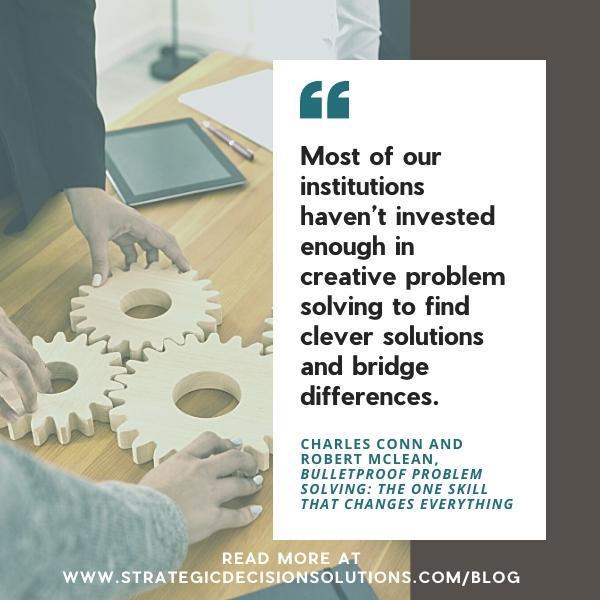You know what they say about assumptions, right?
One particular quote from one of my favorite action movies, the Steven Seagal classic Under Siege 2: Dark Territory comes to mind, but it’s not appropriate to repeat here.
Instead, we’ll turn to the brilliant Albert Einstein who is quoted as once saying…
Assumptions are made and most assumptions are wrong.”
One issue I’ve run into dozens of times with executives and other decision-makers is the tendency to assume they know the answer to a question or a problem without first hearing all of the details of what’s going to be discussed.
When this happens to me or I hear about it from someone else, I can’t help but wonder if they purchased a customized “jump to conclusions mat” like the one shown in the classic satire movie Office Space.
Okay, that’s my last movie reference for today, I promise.
All kidding aside, making assumptions has the potential to be very damaging, especially in today’s volatile world.
Therefore, when reading the book Bulletproof Problem Solving: The One Skill that Changes Everything, it was not surprising to see “assumptions” or “asserting the answer” as a common pitfall of effective problem solving.
In the book, authors Charles Conn and Robert McLean discuss how this pitfall manifests itself with the analogy “I’ve seen this before” or something similar. Respondents will jump to conclusions on a particular question or problem without testing, data, and other information to see if the solution is a good fit for the “problem” at hand.
In my own experience, during a gathering to discuss a newly identified risk, I would introduce the topic and before I could give any details, people in the room, oftentimes executives, would begin rattling off a laundry list of mitigations and other steps to address the risk/issue without having any context. Before I can explain how the risk is connected to a particular strategic goal so they can filter their response, we have to spend even more time sifting through each step they just rattled off, which of course is time consuming.
Not only can this pitfall lead to wasted time and resources, it can also lead to poor decisions and outcomes.
We all engage in problem solving in one respect or another, but most of us don’t do it in a systematic way. While we may be good at one or two aspects of this critical skill, nearly all of us are going to struggle in other areas.
In prior times, complex problem solving was considered to be relevant to only a few professions in the science, engineering, and management consulting fields. Today it is considered a top skill companies need to survive and thrive in the decades ahead, but as the authors of Bulletproof Problem Solving explain:

Although the book uses this particular phrase, we could easily exchange “problem solving” for risks and opportunities. After all, these are just “problems” or “issues” to address right?
But to adequately address the pitfall of assuming or asserting the answer, you and executives have to understand its root cause.
The topic of root cause analysis in the context of risk is something I’ve discussed often through the years. Understanding what is ultimately driving a risk or issue is a critical part of determining the right solution.
When it comes to asserting the answer or making assumptions, the reasons why we tend to do this are rooted in particular biases we all carry with us, specifically:
- Confirmation bias
- Availability bias
- Anchoring bias
I explore these more in the article 29 Biases and Traps that Prevent Good Decision-Making, so I invite you to check out that post for more on these specific biases.
Addressing these root causes of assuming or asserting the answer is no easy task, because as explained in the book Decision Quality: Value Creation from Better Business Decisions:
We are wired to reject evidence that conflicts with existing beliefs, and to retain evidence that confirms those same beliefs.”
While it may seem like a daunting thing to change though, the best place to start is to sit back and listen – to resist the temptation to jump up and act like you know the right answer without first hearing all of the facts and figures. Taking the effort to actively listen and interpret tone and body language is one of the cornerstones of effective risk conversations.
Developing effective problem-solving skills and avoiding pitfalls like the one described above is more important now than ever, especially when you consider the turmoil of inflation, pandemic, and war plaguing today’s world.
At the end of the day, assuming you know the right answer or right way to move forward without first understanding the context can lead to disastrous consequences, regardless of whether it is you in your capacity as a risk professional or among executives and other decision-makers. Taking steps to identify, understand, and address will be critical for ensuring your company’s future success.
Do executives and other decision makers in your organization fall into this common pitfall of effective problem solving and decision making?
One other way to address this type of problem is to learn how peers across industries are handling it.
To share your thoughts on this important topic, please feel free to leave a comment below, join the conversation on LinkedIn, or email me directly (…and privately) at comments@strategicdecisionsolutions.com.
And if your company is struggling with this or other areas of effective problem solving, please don’t hesitate to reach out today to discuss your specific situation and potential solutions to your challenges.







